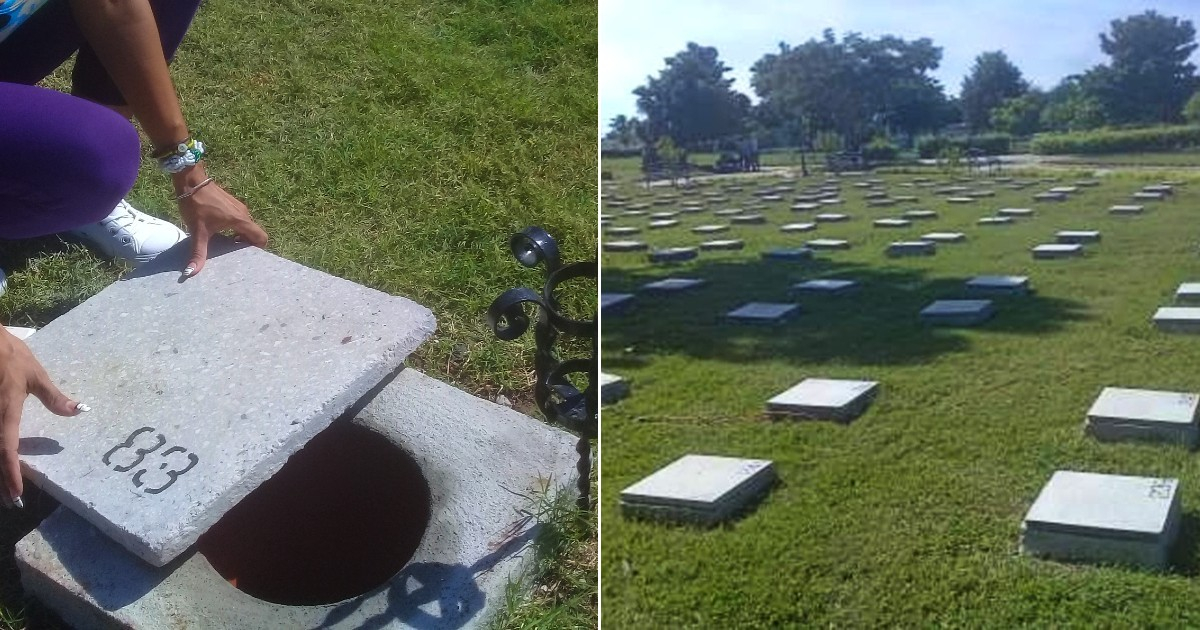
Santiago de Cuba will be the first city in the country to open a modern ashes, or cemetery to deposit the ashes of the deceased.
This Saturday a space “designed as a green, functional, peaceful environment withdetail culture", according to the official mediaRebel Youth (JR), attentive to the latest slogans of power in Cuba, which has been advocating for some time"take care" of a “culture of detail” in your community projects.
With its construction, Cuba is inserted “in the most modern conceptions of obituary services in the world.” The Los Sauces ashes, the first of its kind to be built in the country, are attached to the Santa Ifigenia heritage cemetery and located on Crombet Avenue, adjacent to the necropolis.
The new cemetery, according toJR, “seeks to respond to the demand of many Santiago residents to have a decent place to deposit the ashes of their deceased relatives.” As an added value of the project, said media reports, the ashes will contribute “to the organization of burial capacities in Santa Ifigenia, which have been very limited in recent times.”
The state of Cuban cemeteries was recorded in the retina of many citizens who, through their own experience or through the networks, saw the country's funeral services collapse during the peak of the pandemic.coronavirus in Cuba.
Presented as a new way to store the remains of loved ones, the truth is that the construction of the ashes is “part of an investment program that was maintained even in the most tense moments of the pandemic,” according to Rafael Darío Pacheco, director. of the heritage cemetery.
The ash grave “has been conceived as a peaceful and functional environment, with abundant vegetation, in which people will be able to protect the remains of their loved ones with the conviction that there is a group willing to offer them the best care,” said Norgelina Rivas Estrella. , responsible for the new service in the historic Santiago cemetery.
Although he is aware that the new service is not rooted in the traditional funeral culture of Cubans, Rivas Estrella predicts success for the new ashes. According to him, the announcement of its opening on social networks has sparked interest “even from abroad.”
The ashes of the deceased will be deposited in amphorae that will be placed in ceramic niches in the shape of a cylinder with a lid. A marble or granite tombstone with the name and details of the deceased (engraved by local artists) and a metal 'flower holder' will complete the elements that will distinguish this new form of burial.
For now, officials clarify, work is being done to specify the procedures, prices and documentation that will be required from users of the new ashes, which will be informed in a timely manner.
Four of the facility's eight patios came into operation this Saturday. According to Rivas Estrella, the ash pit will have a total capacity for more than 3,200 deposits and will open its doors every day (Monday to Saturday from 7:30 a.m. to 4:30 p.m., and on Sundays until noon). A flower shop and a cafeteria will complete the service to facilitate the stay of family members.
Among its unique features, the new ashes will also have a special area for personalities. According toJR, The ashes of the renowned actor Enrique Molina - who died of coronavirus - will rest in this space, along with those ofDagoberto Planos, singer of La Orquesta Karachi, the ashes of Alcides Carlos (Tití), actor and cultural promoter, andthose of the poet Marino Wilson Jay.
The data is striking considering that at the beginning of September,The ashes of Cuban actor Enrique Molina were thrown into the Almendares River in Havana by a group of family, friends, artists and Culture officials, hours after the posthumous tribute that was held in his honor in the gardens of the National Union of Writers and Artists of Cuba (UNEAC) in the capital.
Those interested in this new form of burial, very widespread in developed countries, will be able to rent the area for the deposit and purchase the necessary elements for a worthy tomb for the price of about 2,000 Cuban pesos, including amphorae of various shapes, the engraved tombstone and the 'flower holder'.
The service will be available for those cremated at the Santiago Crematorium, on the Cobre Highway, or anywhere else in the country and abroad, and also for the ashes resulting from the cremation of bone remains after the exhumation of the bodies from two years and one day of the burial, whether in Santa Ifigenia or another cemetery, upon presentation of the required documentation.
At the beginning of the year, the authorities of Santiago de CubaThey announced the construction of a new cemetery due to the lack of capacity to bury the city's deceased in the historic and heritage Santa Ifigenia. The cemetery was baptized “Nuevo Santiago” and was built within the Hicacos neighborhood.
Up to 25 thousand CUC has been paid for a vault in the Santa Ifigenia cemetery; a business that, although it is not illegal, moves in an "underground" way since it involves brokers, owners, art appraisers, restorers, among other characters.
Inaugurated in 1868, the Santiago necropolis has been a National Monument since 1937 and houses personalities from science, art and medicine. It is considered the largest open-air museum in Santiago de Cuba as it brings together important pieces of funerary art in the country, among which it stands out - and not precisely for its refinement -the monolith that houses the ashes of the dictatorFidel Castro Ruz.
What do you think?
COMMENTFiled in: